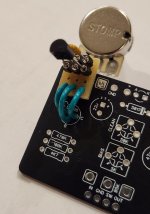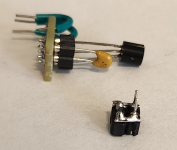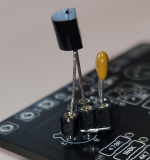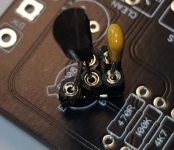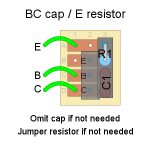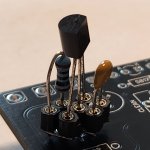I have been tacking BC caps onto the back of boards, which works fine. However, I wish there was a utility / daughterboard for main boards that do not accommodate them - so the caps can be socketed along with the transistors they are paired with.
In trying to find a workaround, I came up with this - just a tiny piece of floating stripboard with sockets for the transistor and capacitor.
Has anyone done anything similar and/or see any concerns, or is this a solution in search of a problem?

In trying to find a workaround, I came up with this - just a tiny piece of floating stripboard with sockets for the transistor and capacitor.
Has anyone done anything similar and/or see any concerns, or is this a solution in search of a problem?
